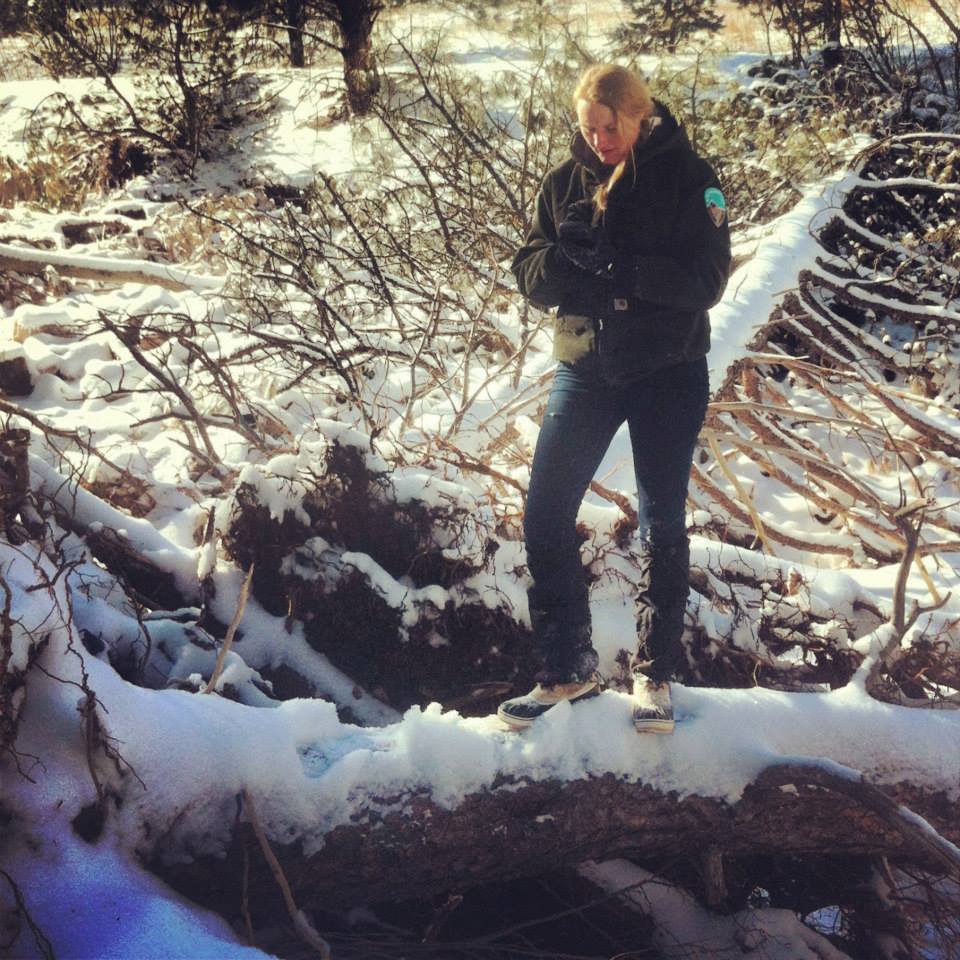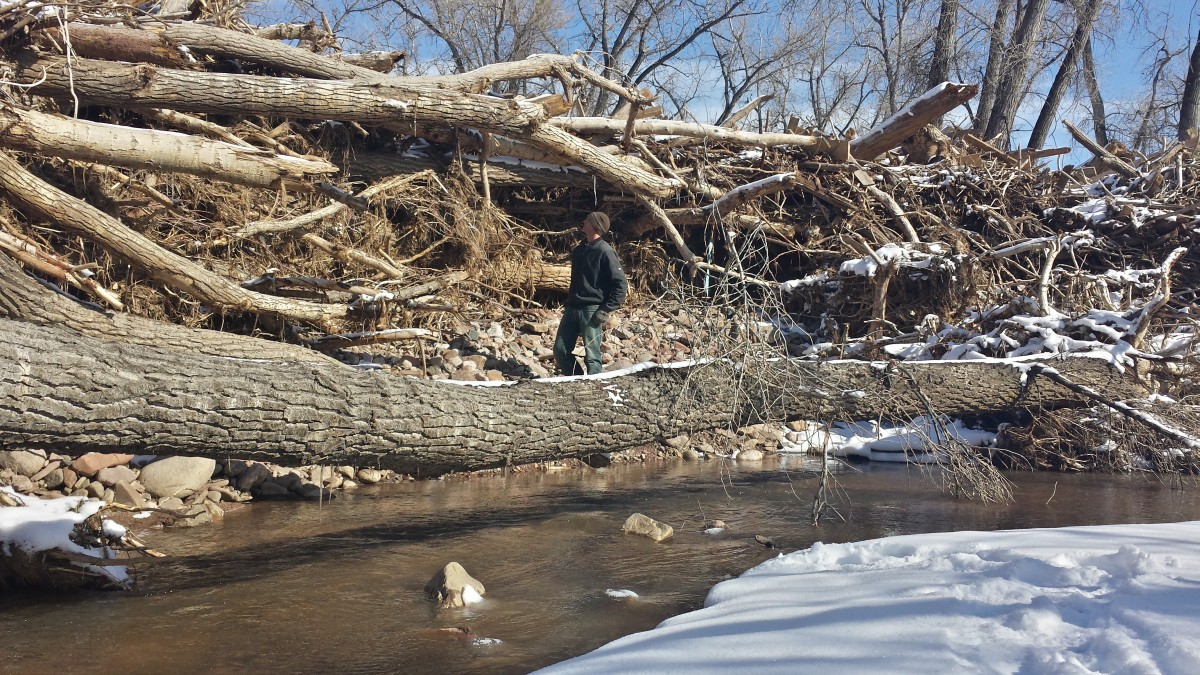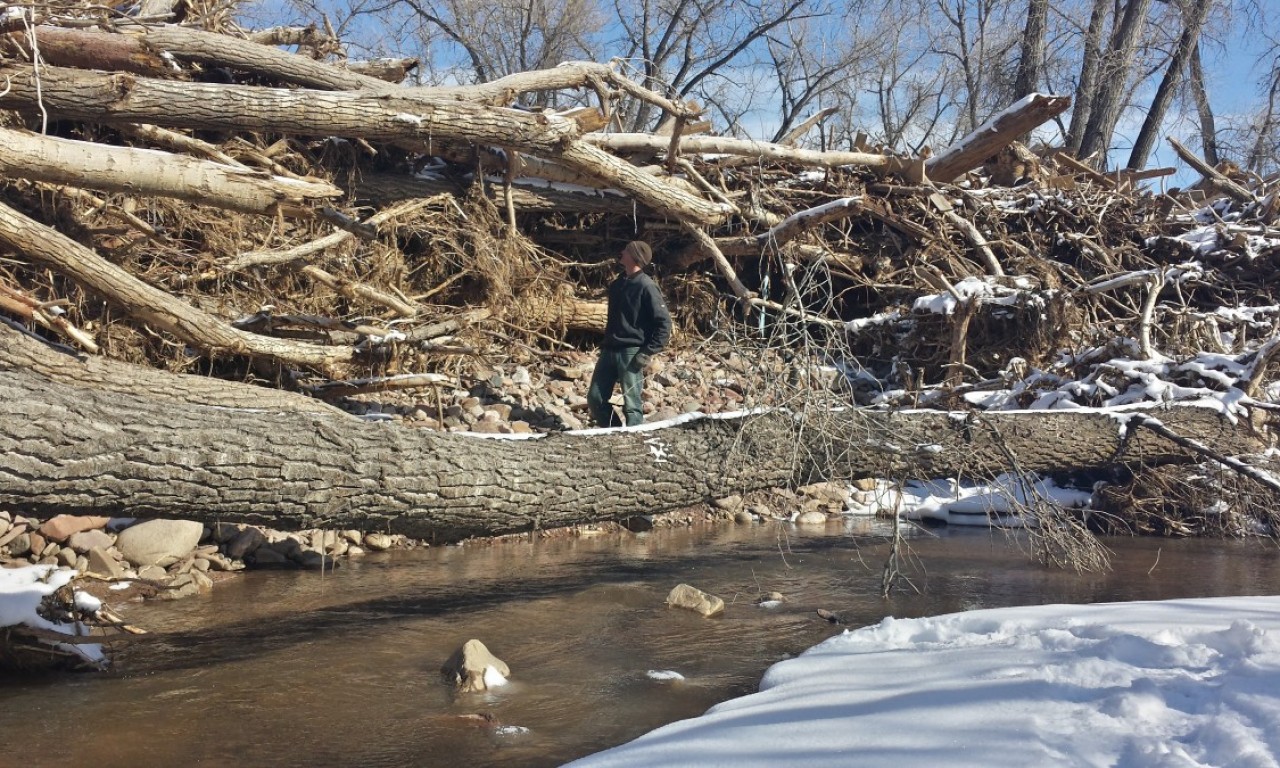Months after the September flood, Boulder County Parks and Open Space continues to assess and manage the impact of flood waters on the county’s waterways. To get a clear picture of the damage, a Flood Debris Assessment Team was created to record debris deposited in the creeks and streams.
In November, Project Coordinator Tim Zych pulled together a motley crew from different divisions within Parks and Open Space: Ari Addes from Historic Preservation, Chase Dryden from Agriculture, Camille Thorson from Plants, Nate McBride and Holly Running-Rabbit from Forestry, and me from Education and Outreach. As a team, we meet every morning, split up into pairs, and divvy up sections of the county to assess. After uploading maps of our target locations onto our GPS devices, we head out for a long day of hiking. Some days we are hiking hard-to-reach stretches of creeks in the foothills, other days we are walking along roadsides or through agricultural fields. Over the past few months the team has walked almost all of the creeks, streams, gulches, and other waterways in Boulder County.
Our main goal is to get a clear picture of the extent of debris in the streams and to identify jams and material that could cause further flooding during the spring melt. For each pile of debris we find, we use a GPS device to map the location and size. We also record a list of attributes, such as debris density, stream width, flood inundation width, type of debris (woody, construction material, or trash), if any hazardous materials exist, and the primary threat. Debris piles that are near roads, bridges, and homes and are likely to cause further damage are flagged as imminent threats. All this information is compiled and passed along to decision makers for longterm plans.
Sometimes the destruction is overwhelming – especially when talking with families that have lost homes and property or finding household goods scattered among the debris. But it is also encouraging seeing residents and construction companies working to rebuild washed out roads, fix damaged homes, and haul out debris. For me, there have been a lot of great experiences that have come out of this opportunityI have been able to explore parts of the county I have never been to, get to know an awesome group of colleagues, and help with the recovery from this historic flood.




